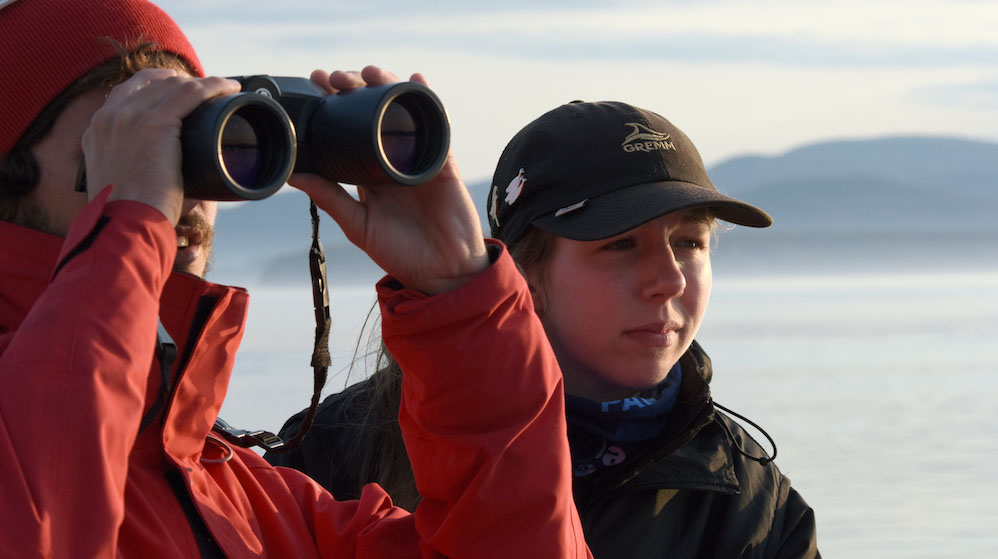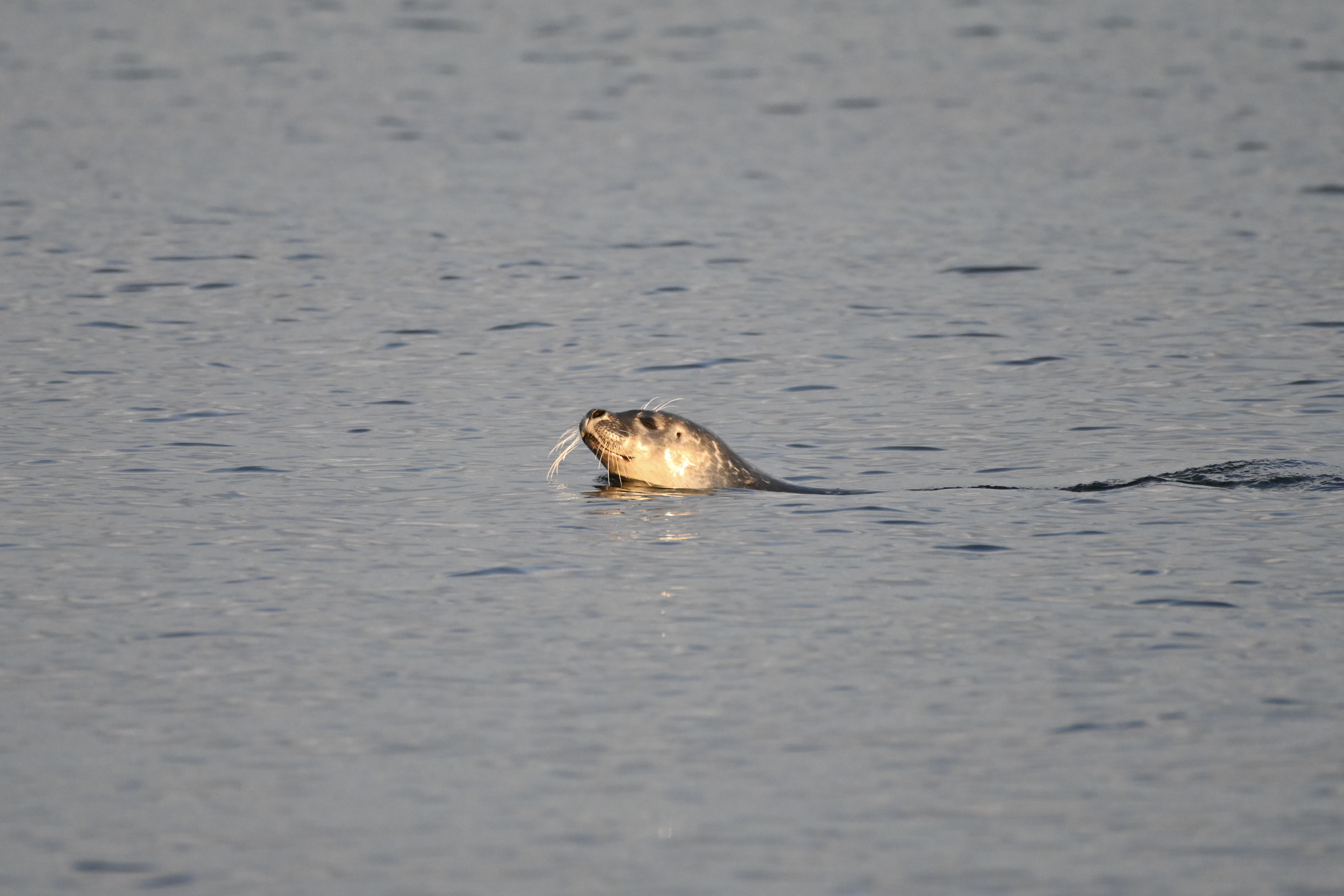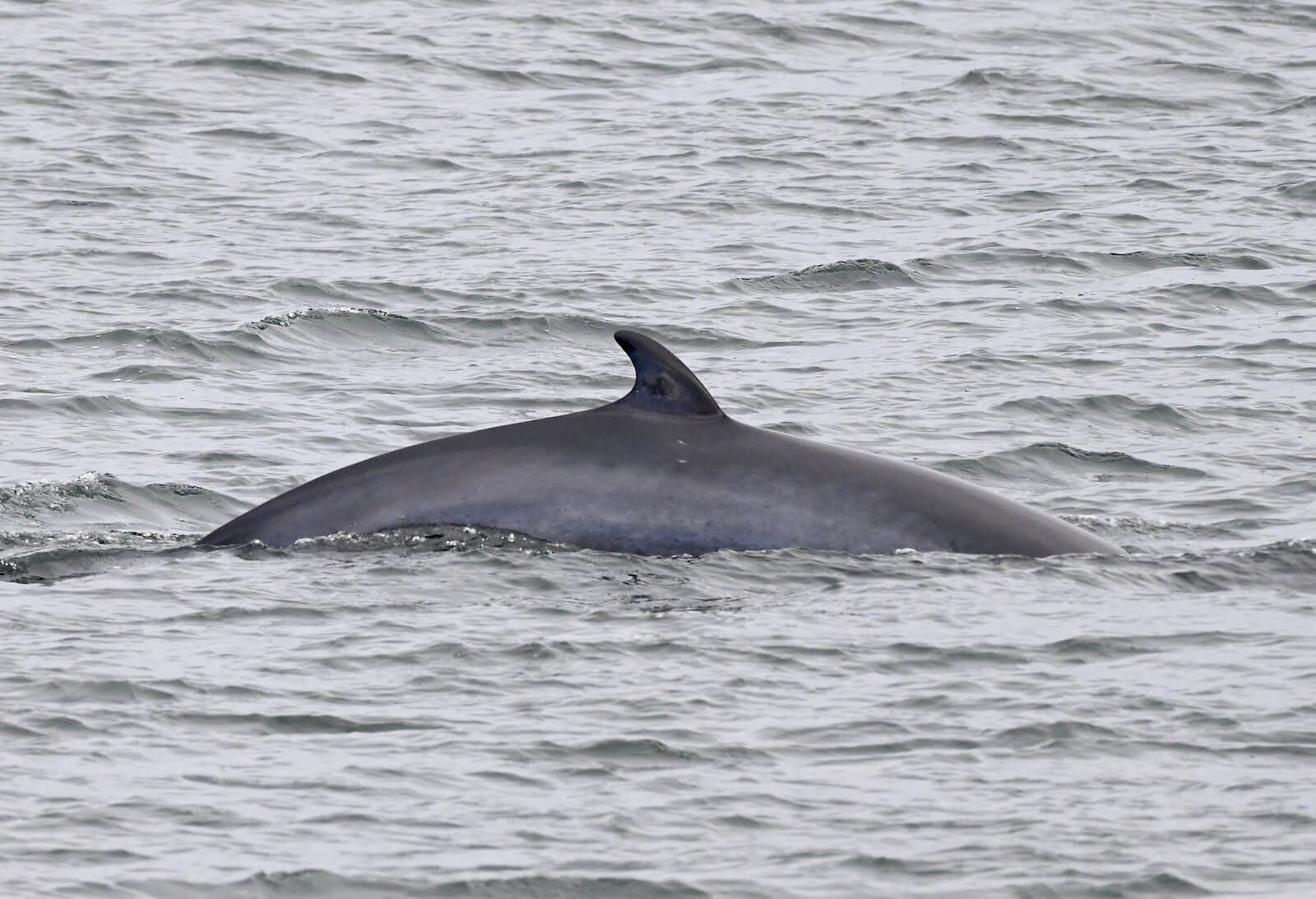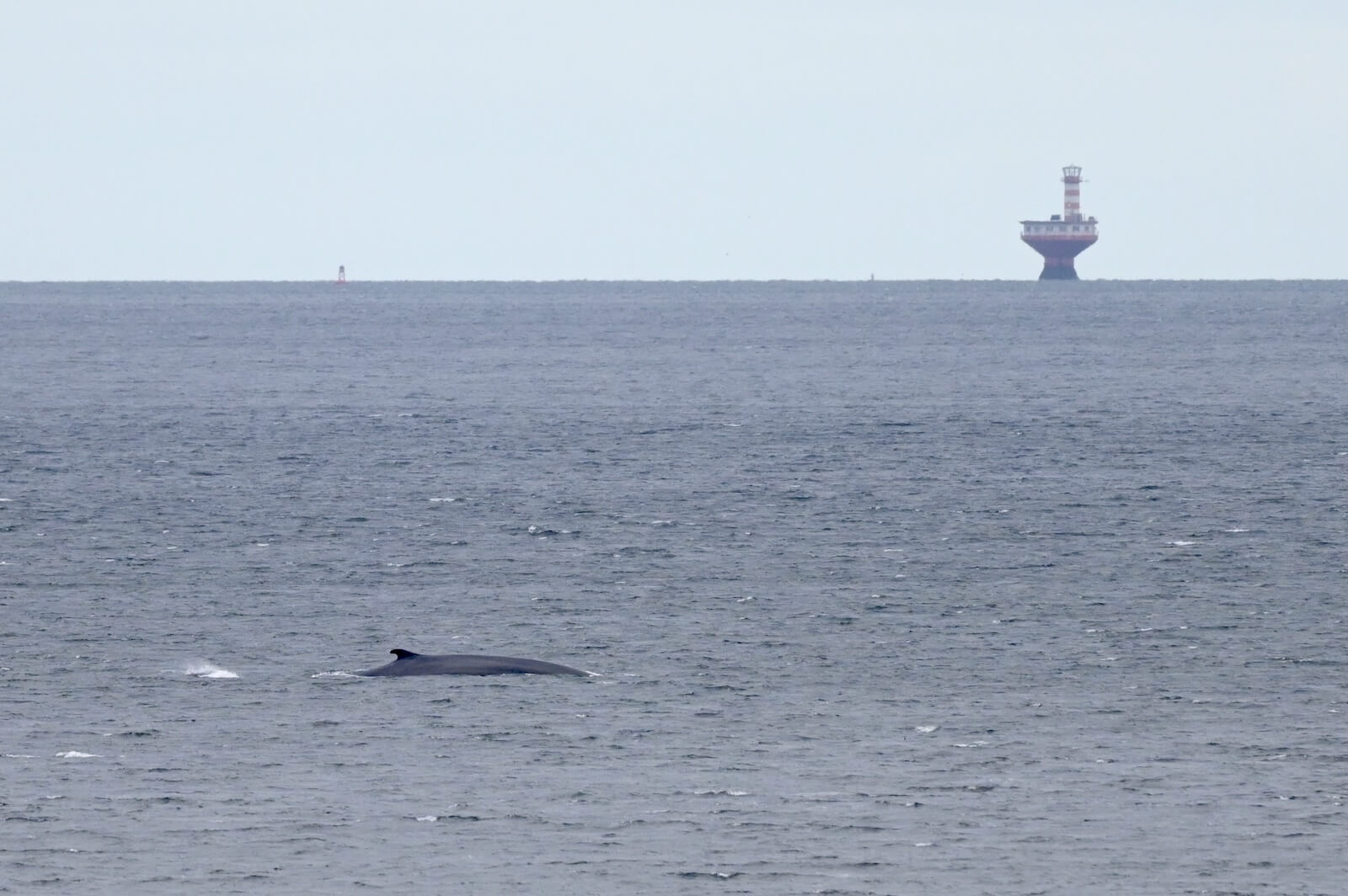One would think it’s still summer with all the sightings reported from our collaborators in the Gaspé. Between the villages of Cap-des-Rosiers and Cap Gaspé, every day for a week, nearly twenty large rorquals have been spotted from atop the high cliffs overlooking the sea. However, travelling to these areas by boat is not so simple, as weather conditions such as strong winds can render navigation difficult if not impossible. In the Gaspé region, observers at sea have crossed paths with four humpbacks, including the female Irisept accompanied by a smaller individual, six fin whales and nearly a dozen minke whales. In Percé, a crew member aboard a whale-watching excursion was literally surrounded by about a hundred white-sided dolphins and observed approximately seven fin whales and four humpbacks near Île Bonaventure.
And marine mammals are not the only ones making heads turn…
Observations in this region are not just about whales. With their impressive speed, Atlantic bluefin tuna also attract attention. They are seen almost daily in Gaspé Bay. In Percé, two leatherback sea turtles are spotted. This species, the largest sea turtle (up to 2 m long and weighing up to 900 kg) is also the largest of reptiles. It is especially found in the waters of Atlantic Canada from July until the end of October, the highest densities being on the Scotian Shelf and Scotian Slope, in the southern Gulf of St. Lawrence and the southern coast of Newfoundland. An excellent diver, it can reach depths of 1000 metres and can remain under water for over an hour. It feeds almost exclusively on jellyfish, prey which are also highly sought after by ocean sunfish, three of which were also observed in the Gaspé sector.
Another non-mammal underwater hunter: the razorbill. Though awkward on land with their legs set far back on their body, their flight is fast, short and jerky. Their small, short rounded wings prevent them from making long flights or hover, but they are perfectly suited for swimming. These birds are accomplished divers capable of reaching ten metres below the surface. For the past two weeks, our collaborator from Franquelin (Côte-Nord region) has been observing several razorbills close to shore. She has also reported a remarkably close-up encounter, approximately 30 m from the coast, of a fin whale on September 26.

In the region between Les Escoumins and Tadoussac, two fin whales were seen, including Caïman. Since she was first observed in 1986, this female has been seen almost every year, making her the most observed fin whale in the history of the Saguenay–St. Lawrence Marine Park.





